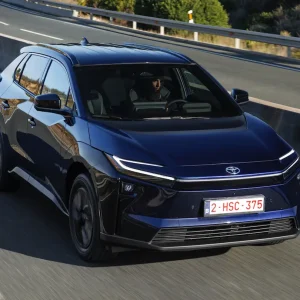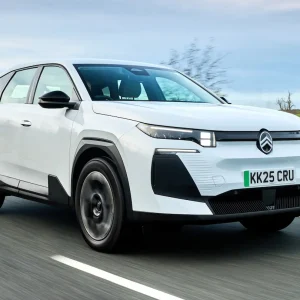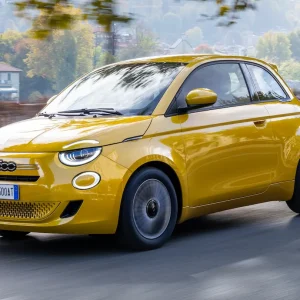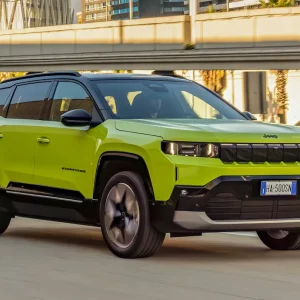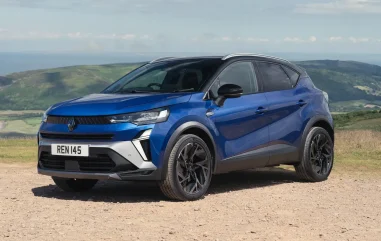
The Renault Captur was a relatively early entrant to the small SUV segment when it first debuted in 2013, but to say it now faces a packed field of rivals would be an understatement. Aiming to take them on is this newly facelifted version of the second-generation Captur, which first arrived in 2020.
The most obvious exterior update is a new-look front end, designed to bring the model into line with newer models in the Renault range, and featuring full LED lighting.
Interior tech
Inside, all versions of the Captur now come with a 10.4in vertical infotainment touchscreen, which from the mid-range Techno equipment grade tested here (and expected to be the best seller) features built-in Google services via Android Automotive 12, which Renault says is a first for the segment. This screen is nicely responsive and features useful climate shortcuts – although we found the Google Assistant voice control produced mixed results in practice.
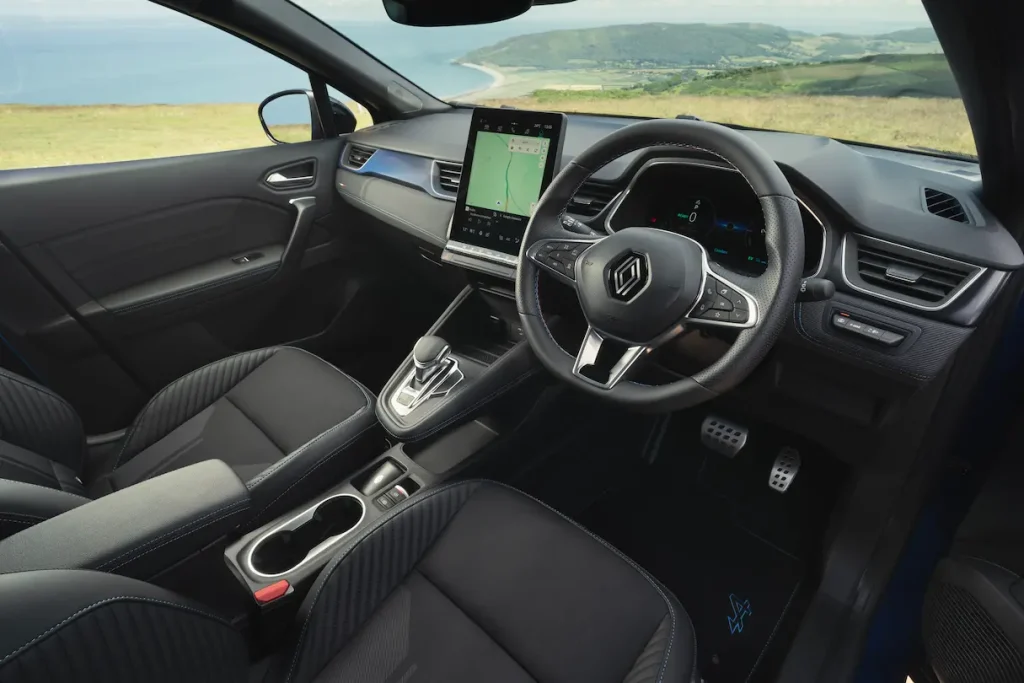
With the Techno grade there are quite a few hard plastics dotted around the interior, though some softer materials at the important touch points (Renault has emphasised the use of sustainable recycled fabrics). We’d also say the cabin’s appearance was fairly grey and drab overall, screens aside.
Rear seat passengers benefit from their own USB chargers and air vents, as well as good legroom for the segment, helped by there being ample room for feet to fit beneath the front seats. That impressive legroom can be traded for extra boot space since the whole rear bench can slide forward, with more than 600 litres of luggage capacity available if this is maximised with a petrol version, or 480 litres with the hybrid (there’s a similar boot space shortfall associated with the hybrid with the rear seats left back). That’s in addition to nearly 25 litres of in-cabin stowage space.
Drive and performance
To elaborate further on those powertrain options, they are a 1.0-litre, 90hp petrol engine, and a 145hp conventional hybrid powertrain, which pairs a 1.6-litre petrol engine with two electric motors. We sampled the latter, which you would expect to gain most fleet interest now that the previous plug-in hybrid option has been dropped from the line-up. We would describe the acceleration on offer as acceptable – it was unlikely to be overly sprightly given it’s a powertrain shared with the smaller Clio supermini. It is capable of extended periods of EV-only running, particularly around town, although the engine can sound a bit unrefined when cutting back in.
The Captur’s handling feels safe and reliable without being particularly sporting, which fits in with Renault’s stated aim of building a comfortable family car rather than a dynamic rival for the likes of the Ford Puma. To this end, comfy seats combine with the suspension to deliver a nice squishy ride quality over back road bumps, without feeling too soft and wallowy.
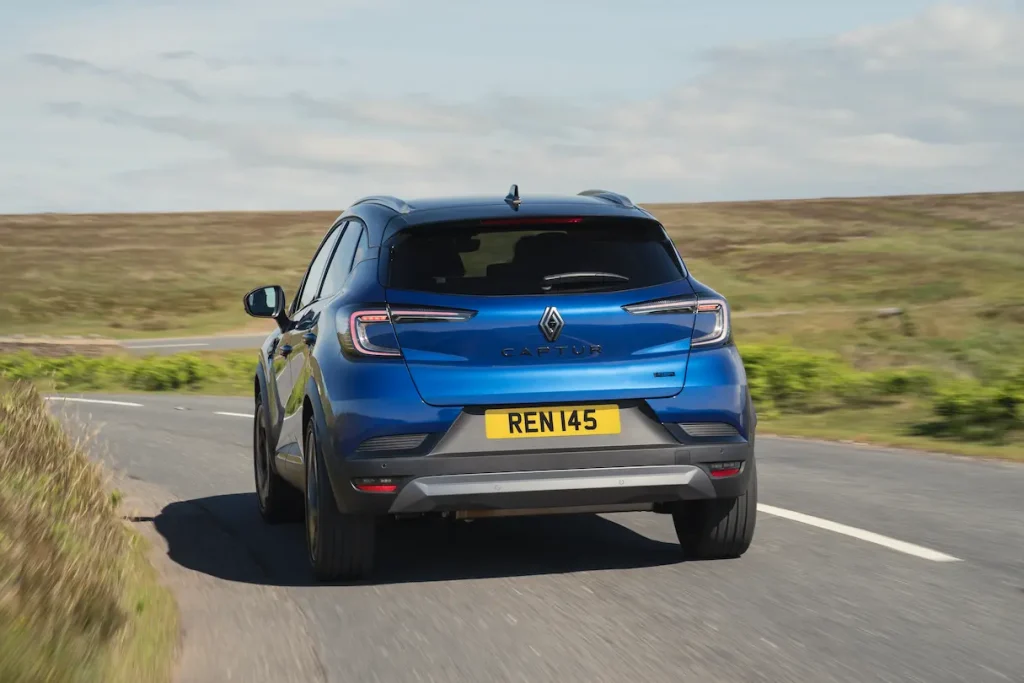
Less relaxing are the in-built safety systems – it’s annoying to be bonged at to ‘keep control’ when driving normally with both hands on the wheel, and we also found it difficult to turn off noise notifications of speed limit changes.
Cost calculation
Despite its extra efficiency, a higher P11D value means the hybrid Captur actually works out more expensive than the petrol on a cost-per-mile basis, although the petrol is far less powerful and incurs higher company car BIK payments. However, the hybrid Captur does look good value for money when compared with hybrid versions of rivals such as the Nissan Juke and Toyota Yaris Cross (though the less powerful Toyota costs slightly less to run and tax).
Positive: Good value for money, comfortable drive, practical expanding boot.
Negative: Dull interior, overly keen driver attention alert.
Standard equipment: 17in alloy wheels, dark tinted rear windows and tailgate, automatic LED headlights and tail lights, heated door mirrors, automatic air conditioning, keyless entry and start, 10.4in infotainment touchscreen, wireless Apple Carplay and Android Auto connectivity, 7in driver display, wireless phone charger, rear parking sensors, reversing camera, cruise control and speed limiter, traffic sign recognition, active emergency braking, driver attention alert, lane keep assist.
Engines: Petrol: 90hp 1.0
Hybrid: 145hp 1.6
Equipment grades: Evolution, Techno, Esprit Alpine
Transmissions: Six-speed manual, six-speed automatic
| Model | Renault Captur Techno E-Tech full hybrid 145 |
| P11D | £26,155 |
| Residual value | 40.5% |
| Depreciation | £15,130 |
| Fuel | £6,710 |
| Service, maintenance and repair | £2,523 |
| Cost per mile | 40.60p |
| Fuel consumption | 58.9mpg |
| CO2 (BIK%) | 107g/km (26%) |
| BIK 20/40% a month | £113/£227 |
| Luggage capacity | 348 litres |
| Engine size/power | 1,598cc/145hp |
| Score | 8/10 |

